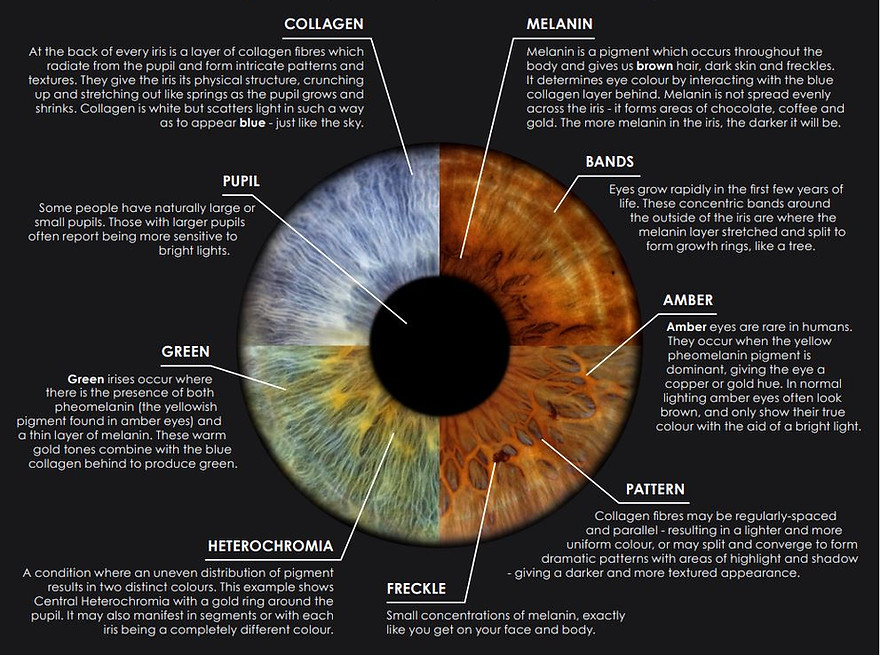
FASCINATING IRIS FACTS
What makes your Iris Unique?
Irises are not simply blue or brown. In fact, every iris is blue and it is the distinct way this interacts with pigment and pattern which produces the incredible variety that we see.

Iris scans are more secure than fingerprints. While a fingerprint has 40 unique characteristics, an iris has 256 unique points, making it uniquely yours.
There are over 7 billion people in the world and every single iris is unique, even identical twins do not share the same irises.
If the human eye were a digital camera it would have 576 megapixels. The human eye is the second most complex organ after the brain and almost 50% of the brain is dedicated to vision.
Humans move their eyes about two or three times a second, even when we're concentrating on a particular object or image. These are called “saccades” and are rapid, ballistic movements of the eyes that abruptly change the point of fixation. The muscles that control eye movements are the most active muscles in the human body This can make the iris quite tricky as a photographic subject!
About 2,000 genes are involved in the development of your iris, and around 50 affect your iris patterns.
A human retina is less than a square centimetre and a half-millimetre thick. It has about 100 million neurons, of five distinct kinds.
Only 2% of the world's population have naturally green eyes, making them one of the rarest eye colours. The highest concentration of people with green eyes is found in Ireland, Scotland, and northern Europe. In fact, in Ireland and Scotland, more than 80% of the population has blue or green eyes!
Heterochromia is a rare condition that can result in individuals having different coloured irises or a multicoloured iris.
The human eye blinks an average of 4,200,000 times a year, 20,000 and 30,000 times every day.
It’s impossible to sneeze with your eyes open.
We actually see things upside down and our brain turns the image the correct way up. As a result of having a curved cornea, the light that enters our eyes is refracted, meaning the image is upside down when it hits the retina at the back of the eye. When the brain interprets the image, it turns it back the right way up so we see the world correctly. Amazing.
The eye is the fastest muscle in your body.
Eyes are able to process 36,000 pieces of information in a single hour.
Your eyes contain 7 million cones which help you see colour and detail, as well as 100 million cells called rods which help you see better in the dark.
The human eye can detect 10 million different colours. All colours in the light spectrum visible to humans, are made up of combinations of red, green and blue.









